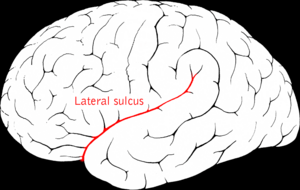Sandra Witelson facts for kids
Sandra Freedman Witelson is a Canadian brain scientist. She is famous for studying the brain of Albert Einstein. She also looks at how male and female brains might be different. Her research includes how brains are different based on which hand people use (left or right). She helps manage the world's largest collection of normal human brains. This collection is at McMaster University in Hamilton, Ontario.
Contents
Brain Research
Studying Albert Einstein's Brain

Sandra Witelson received parts of Albert Einstein's brain. This happened after she was contacted by Dr. Thomas Stoltz Harvey. He was the doctor who took Einstein's brain after he passed away in 1955. Dr. Harvey preserved the brain and made slides from it. Years later, he heard about Witelson's brain collection. He then asked her if she would like to study Einstein's brain, and she agreed.
Her study was published in 1999. She found that Einstein's brain had a wider lower parietal area. This area is important for understanding space and navigation. She also noted that a part called the lateral sulcus was shorter than usual. A shorter sulcus might have allowed more parts of the brain to connect. Witelson suggested these differences might have helped Einstein's amazing thinking skills.
Brain Differences from Birth
In 1973, Witelson looked at how brains are different from one side to the other. She studied newborn babies' brains. She discovered that these differences, both in how the brain is built and how it works, are present right from birth.
Differences Between Male and Female Brains
Witelson published a paper in 1976 about how boys' and girls' brains work differently. She found that six-year-old boys often use one side of their brain when reading. Girls, however, tend to use both sides of their brain for the same task.
She also found that female brains had a thicker corpus callosum. This is like a bridge that connects the two halves of the brain. The thicker part was in the area linked to language skills. Another study showed that women have more brain cells in the language area than men. She also noted that the amygdala, which is active during stress, signals more to areas controlling movement in men. In women, it signals more to the hypothalamus, which controls body functions like breathing.
Witelson also studied brain size and intelligence. She looked at 100 volunteers who agreed to have their brains measured after they passed away. She found that, generally, larger brains performed better on intelligence tests. Brain size decreased with age in men between 25 and 80 years old. However, for reasons not fully known, age did not affect brain size much in women. For women, verbal and spatial intelligence were linked to brain size. For men, verbal intelligence was better only for right-handers, likely due to brain differences. Spatial ability in men did not change much with brain size.
Personal Life
Sandra Witelson was born and grew up in Montreal, Quebec. She now lives in Hamilton, Ontario. She is a professor at McMaster University's Michael G. DeGroote School of Medicine. She works in the Department of Psychiatry & Behavioral Neurosciences. She earned her PhD degree from McGill University.
See also
 In Spanish: Sandra Witelson para niños
In Spanish: Sandra Witelson para niños

